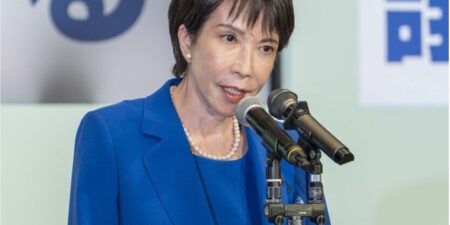BowerGroupAsia Managing Director for Global Trade and Economics Nydia Ngiow wrote an update to clients on new U.S. tariff rates.
Context
- U.S. President Donald Trump unveiled new tariffs July 31 targeting exports of U.S. trading partners through an executive order as he followed through on his plans to remake global trade. These tariffs are expected to enter into force August 7 at 12:01 a.m. Eastern time. For the Indo-Pacific, tariffs will range from 10 percent to as high as 40 percent for countries that the president deemed to have unbalanced trade with the United States or not to have offered concessions to Washington in recent negotiations.
- This comes after the Trump administration announced a slew of trade deals with several countries in the region, including Indonesia, the Philippines, Japan and most recently, Korea. Countries that have agreed to preliminary deals are subject to tariffs of between 10-20 percent, lower than what Trump originally threatened but still significantly higher than historical levels.
- The executive order also establishes the 40 percent tariff on anything the U.S. Customs and Border Protection determines has been “transshipped” to avoid higher duties elsewhere. This clearly targets goods made in China that are shipped to another country and repackaged or otherwise superficially changed.
Significance
- Given the critical importance of access to the U.S. market for the Indo-Pacific, it is no surprise that most Asian countries have been rapidly securing agreements with the United States, especially because no economy in the region can afford to fall behind its peers. Following Japan’s agreement, Korea needed to follow suit quickly. A similar pattern emerged in Southeast Asia, where Thailand and Cambodia finalized last-minute deals after Vietnam led the way.
- De minimis treatment, which allowed shipments of up to $800 to enter the United States duty-free, will be suspended for all countries starting August 29, 2025. Reciprocal tariffs will apply to these shipments and will most likely impact small businesses globally. De minimis was initially limited to China and Hong Kong due to concerns about the fentanyl crisis, but Trump stated in an executive order that adequate systems were now in place to effectively collect these duties.
Implications
- Trump’s actions raise important questions about the future value of free trade agreements (FTAs) with the United States. Long-standing FTA partners such as Australia and Singapore received no preferential treatment in this process and remain subject to the 10 percent baseline. This places them at a relative disadvantage, especially given that tariffs between these countries and the United States had previously been eliminated. Notably, there was no clarification on whether FTA-compliant goods will continue to enjoy tariff-free entry into the United States, which is allowed for Mexico and Canada under the United States-Mexico-Canada agreement. While countries may continue to pursue FTAs with other partners to reduce their reliance on the U.S. market, the current trajectory offers limited incentives for them to do so with the United States going forward.
- Even with this latest executive order, companies should continue to expect a continued state of uncertainty in the coming months. Administration officials signaled that they remain open to additional negotiations, which means the rates could be decreased or increased, depending on how satisfied the United States is with the concessions provided. Changes could also follow pending ongoing discussions between the United States and China regarding the extension of their trade truce, which is set to expire August 12. Treasury Secretary Scott Bessent stated in a television interview July 31 that this was likely to happen.
If you have any questions, please reach out to BGA Managing Director for Global Trade and Economics Nydia Ngiow, Head of Research Murray Hiebert or Senior Adviser Larry Greenwood.
Best regards,
BGA Global Trade and Economics Team

Managing Director, Global Trade and Economics
Nydia brings over a decade of experience working at the forefront of international affairs and international trade issues in the Asia-Pacific, with the majority of her career prior to BGA spent working for the Singapore government. Nydia most recently managed the China Program at the American National Standards Institute (ANSI) in Washington, D.C., where she brought together technical, business and policy leaders to find solutions to issues affecting U.S.-China trading relations to strengthen U.S. market access in China. She provided member organizations with coverage of policy and reform issues, and furthered ANSI’s relationships with counterpart organizations in China. Positioned in ...
Read More


























